Walker’s Mity-Tite Wig / Toupee Bonding Adhesive 0.5 oz
Description
The Walker Tape Mity-Tite Brush Adhesive is a professional-grade solution for secure wig and toupee bonding. With a convenient .5 oz size, this adhesive provides a long-lasting hold without causing any discomfort or residue.
Perfect for everyday wear and special occasions, the Mity-Tite Brush Adhesive ensures your wig stays in place all day with confidence and peace of mind. Trust in the quality of Walker Tape to keep your wig securely attached, allowing you to go about your day worry-free confidently. Get exceptional results with the Mity-Tite Brush Adhesive from Walker Tape.
- Very popular as it dries clear & stays strong
- Non-yellowing, waterproof formula.
- For best results use with scalp protector.
- Handy travel size bottle with brush on applicator.
- Instructions included.
- Patch test recommended.
0.5 oz bottle/applicator brush.
See our adhesives comparison chart for more details.
There are no question found.

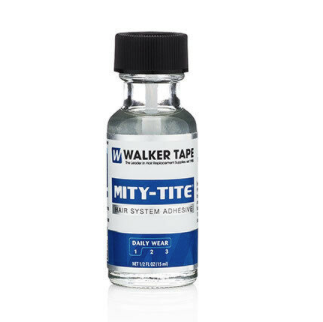


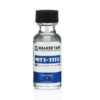
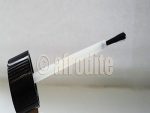



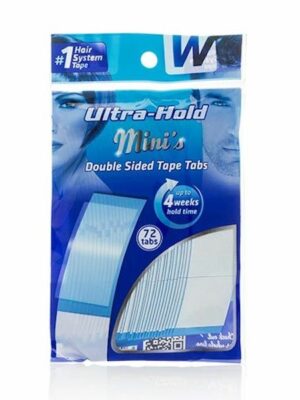
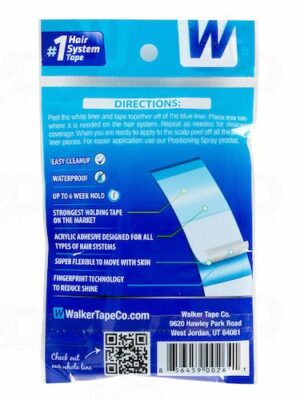




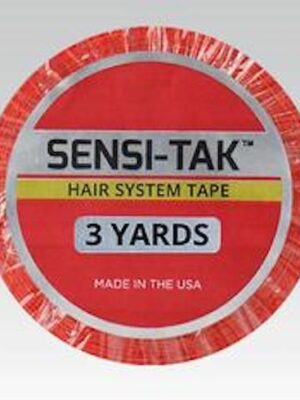
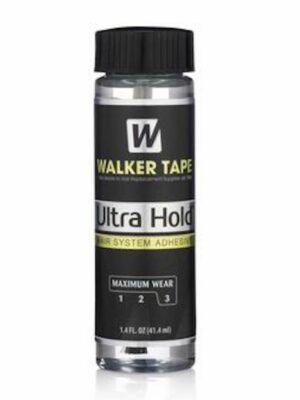





Anglea
best place to inject ipamorelin References: <br /> <a href="https://prpack.ru/user/tempercase8/">prpack.ru</a> <br />
References:
prpack.ru
Lottie
CJC‑1295 combined with Ipamorelin has become a popular duo among bodybuilding and anti‑aging communities, especially on forums where users share personal experiences and results. Many people turn to Reddit threads to gather anecdotal evidence about how these peptides perform over time, what side effects they encounter, and how best to structure their protocols. Below is an in-depth look at the typical journey of someone using CJC‑1295 and Ipamorelin, a recount of how one user discovered the pair, and a set of personal peptide rules that have proven helpful for minimizing risks while maximizing benefits. Months on CJC-1295/Ipamorelin Here Is What Happened The experience of using these peptides can be broken down into several stages. During the first month of use, most users report an immediate surge in appetite and thirst levels—an expected result of increased growth hormone release. This often leads to a noticeable increase in body weight by 2 to 4 pounds, primarily due to water retention and early muscle glycogen loading. From months two through four, users typically start to observe improvements in recovery times after workouts. Muscle soreness tends to drop off more quickly, allowing for higher training volumes or more frequent sessions. By the end of month three, many individuals notice subtle changes in skin texture; a brighter complexion and reduced fine lines become apparent. These aesthetic benefits are often attributed to enhanced collagen synthesis driven by elevated growth hormone levels. During months five to eight, strength gains usually plateau but overall body composition begins to shift. Lean mass increases while fat mass may reduce slightly, especially if the user maintains or improves their caloric balance. Some users report a new sense of energy and mental clarity that persists even during rest days. This period can also bring side effects such as mild edema in the extremities, which often resolves once the body adapts. From month nine onward, many long‑term users experience a stabilization of benefits. Growth hormone levels remain high enough to maintain muscle mass but may not produce dramatic new gains without additional stimulus. At this stage, people often switch from daily injections to a weekly schedule or add a pulse of another peptide like MK-677 to sustain the anabolic drive. Side effects that were mild earlier—such as occasional headaches or slight joint discomfort—can become more pronounced if doses are increased beyond what the body comfortably tolerates. How I Found Out About CJC‑1295 Ipamorelin The discovery process often starts with a search for natural ways to boost growth hormone without resorting to testosterone replacement. One user began by reading scientific literature on ghrelin mimetics and peptide hormones that stimulate the pituitary gland. They found a review article that highlighted CJC‑1295 as a long‑acting analog of GHRH (growth hormone releasing hormone) and Ipamorelin as a selective growth hormone secretagogue. The combination was praised for its synergistic effect: CJC‑1295 provides sustained stimulation while Ipamorelin triggers rapid, short bursts of hormone release. After reviewing several studies, the individual noticed that many professional athletes used this duo to aid recovery after intense training sessions. They then turned to online communities—particularly Reddit subreddits focused on peptide use—to gather real‑world data. Threads titled "CJC-1295 and Ipamorelin results" offered user testimonials detailing dosage regimens, injection sites, and side effect profiles. By comparing multiple posts, the user was able to form a consensus: the most common protocol involves 0.1 milligrams of CJC‑1295 per injection twice daily, paired with 0.25 milligrams of Ipamorelin in each session. This information guided their own experimentation while maintaining safety margins. My Peptides Rules to Follow Over time, several guidelines have emerged from the community that help users navigate the risks associated with peptide therapy. The following rules are based on personal experience and collective wisdom gathered from Reddit discussions: Start Low, Go Slow – Begin with the lowest effective dose (for example 0.05 milligrams of CJC‑1295) to observe how your body reacts. Once tolerance is confirmed, increase in small increments. Alternate Injection Sites – To prevent lipodystrophy or skin irritation, rotate injection sites between abdomen, thigh, and upper arm. Keep each site clean and avoid injecting into areas with existing scars or cysts. Maintain Hydration and Electrolytes – Because growth hormone can promote water retention, drink at least eight glasses of water daily and supplement electrolytes if you notice swelling or muscle cramps. Monitor Blood Sugar Levels – Growth hormone has anti‑insulin effects that may raise glucose levels. Check fasting blood sugar before starting therapy and periodically thereafter to avoid insulin resistance. Track Hormone Panel – Periodic testing for growth hormone, IGF‑1, cortisol, thyroid hormones, and testosterone helps identify imbalances early. Adjust dosage or pause treatment if any values stray beyond normal ranges. Adhere to a Structured Cycle – Many users recommend a 12‑week cycle followed by a two‑to‑four‑week break. This allows the pituitary gland to recover and reduces the risk of downregulation. Use High‑Quality Reagents – Source peptides from reputable suppliers that provide certificates of analysis. Contaminated or expired products can cause adverse reactions. Stay Informed About Legal Status – Regulations vary by country, so ensure compliance with local laws regarding peptide importation and use. Some regions restrict the sale of these substances for non‑clinical purposes. Combine With a Balanced Lifestyle – Adequate sleep, proper nutrition, and structured training are essential to harness the <a href="https://www.valley.md/understanding-ipamorelin-side-effects">full benefits</a> of CJC‑1295/Ipamorelin. Peptides alone will not produce results if other health factors are neglected. Listen to Your Body – If you experience persistent headaches, swelling, or joint pain that does not resolve with rest, reduce the dose or discontinue use until symptoms subside. Report serious side effects to a healthcare professional promptly. By following these rules and staying mindful of how your body responds over time, users can mitigate common side effects such as edema, transient headaches, or mild hormonal fluctuations. The community continues to evolve its best practices through shared data on Reddit and other platforms, ensuring that new users benefit from the collective experience of those who have already walked this path.
users share personal experiences and results. Many people turn to Reddit threads to gather anecdotal evidence about how these peptides perform over
time, what side effects they encounter, and how best to structure their protocols.
Below is an in-depth look at the typical journey of someone using CJC‑1295 and Ipamorelin, a recount
of how one user discovered the pair, and a set of personal peptide rules that have proven helpful for minimizing risks while maximizing benefits.
Months on CJC-1295/Ipamorelin Here Is What Happened
The experience of using these peptides can be broken down into
several stages. During the first month of use, most users report an immediate surge in appetite and thirst levels—an expected result of
increased growth hormone release. This often leads to a noticeable
increase in body weight by 2 to 4 pounds, primarily due
to water retention and early muscle glycogen loading.
From months two through four, users typically start to observe improvements in recovery
times after workouts. Muscle soreness tends to drop off more quickly, allowing for higher training volumes or more frequent sessions.
By the end of month three, many individuals notice
subtle changes in skin texture; a brighter complexion and reduced fine lines become apparent.
These aesthetic benefits are often attributed to enhanced collagen synthesis
driven by elevated growth hormone levels.
During months five to eight, strength gains usually plateau
but overall body composition begins to shift. Lean mass increases while fat mass
may reduce slightly, especially if the user maintains
or improves their caloric balance. Some users report a new sense of energy and mental clarity that persists even during
rest days. This period can also bring side effects such as mild edema in the extremities, which often resolves once the body adapts.
From month nine onward, many long‑term users experience a stabilization of benefits.
Growth hormone levels remain high enough to maintain muscle mass but may not produce dramatic new
gains without additional stimulus. At this stage, people often switch from daily injections to a weekly schedule or add a pulse
of another peptide like MK-677 to sustain the anabolic drive.
Side effects that were mild earlier—such as occasional headaches
or slight joint discomfort—can become more pronounced if doses
are increased beyond what the body comfortably tolerates.
How I Found Out About CJC‑1295 Ipamorelin
The discovery process often starts with a search for natural ways to boost
growth hormone without resorting to testosterone replacement.
One user began by reading scientific literature on ghrelin mimetics and peptide hormones that
stimulate the pituitary gland. They found a review article that highlighted CJC‑1295 as a long‑acting analog of
GHRH (growth hormone releasing hormone) and Ipamorelin as a selective growth hormone secretagogue.
The combination was praised for its synergistic effect: CJC‑1295 provides
sustained stimulation while Ipamorelin triggers rapid, short bursts of hormone release.
After reviewing several studies, the individual noticed that many professional athletes used
this duo to aid recovery after intense training
sessions. They then turned to online communities—particularly Reddit subreddits focused on peptide use—to gather real‑world data.
Threads titled “CJC-1295 and Ipamorelin results” offered user testimonials detailing
dosage regimens, injection sites, and side effect profiles.
By comparing multiple posts, the user was able to form a consensus: the most common protocol involves 0.1 milligrams of CJC‑1295 per injection twice daily, paired with 0.25 milligrams of Ipamorelin in each session. This information guided their own experimentation while maintaining safety margins.
My Peptides Rules to Follow
Over time, several guidelines have emerged from the community that help users
navigate the risks associated with peptide therapy. The
following rules are based on personal experience and collective
wisdom gathered from Reddit discussions:
Start Low, Go Slow – Begin with the lowest effective dose (for example 0.05 milligrams of CJC‑1295) to observe how your
body reacts. Once tolerance is confirmed, increase in small increments.
Alternate Injection Sites – To prevent lipodystrophy or
skin irritation, rotate injection sites between abdomen,
thigh, and upper arm. Keep each site clean and avoid injecting into
areas with existing scars or cysts.
Maintain Hydration and Electrolytes – Because growth
hormone can promote water retention, drink
at least eight glasses of water daily and supplement electrolytes if
you notice swelling or muscle cramps.
Monitor Blood Sugar Levels – Growth hormone has anti‑insulin effects that may raise glucose levels.
Check fasting blood sugar before starting therapy and periodically thereafter to avoid insulin resistance.
Track Hormone Panel – Periodic testing for growth hormone, IGF‑1, cortisol,
thyroid hormones, and testosterone helps identify imbalances early.
Adjust dosage or pause treatment if any values stray beyond normal ranges.
Adhere to a Structured Cycle – Many users recommend a
12‑week cycle followed by a two‑to‑four‑week break.
This allows the pituitary gland to recover and reduces the risk of downregulation.
Use High‑Quality Reagents – Source peptides from reputable
suppliers that provide certificates of analysis. Contaminated or expired products can cause adverse reactions.
Stay Informed About Legal Status – Regulations vary
by country, so ensure compliance with local laws regarding peptide importation and use.
Some regions restrict the sale of these substances for non‑clinical purposes.
Combine With a Balanced Lifestyle – Adequate sleep, proper
nutrition, and structured training are essential
to harness the full benefits of CJC‑1295/Ipamorelin. Peptides alone will not produce results if other health factors are neglected.
Listen to Your Body – If you experience persistent headaches, swelling, or joint pain that does not
resolve with rest, reduce the dose or discontinue use until
symptoms subside. Report serious side effects to a healthcare professional
promptly.
By following these rules and staying mindful of how your
body responds over time, users can mitigate common side effects such as edema,
transient headaches, or mild hormonal fluctuations.
The community continues to evolve its best practices through shared data on Reddit and
other platforms, ensuring that new users benefit from the collective
experience of those who have already walked this path.
Jonathon
Anavar 50 mg tablets are a popular choice for athletes and bodybuilders who want to enhance muscle definition, strength, and recovery while keeping the risk of side effects relatively low compared to other anabolic steroids. Because the drug is available in a convenient tablet form and has a well‑documented safety profile when used responsibly, many users look for clear guidance on how much to take, what benefits they can expect, and how to mitigate potential risks. How Much Anavar to Take: A Safe and Informed Guide The most common dosage range for Anavar 50 mg tablets is between 5 and 20 mg per day. Beginners or those with a lower tolerance usually start at the low end—about 5 mg daily—for an initial cycle of four to six weeks. This allows the body to acclimate to the anabolic effects without overwhelming the liver or hormonal balance. As users gain experience, they can incrementally raise their dose by 5 mg each week until they reach a maintenance level of 10–15 mg per day. The upper limit of 20 mg is rarely necessary for most training goals and increases the likelihood of side effects such as elevated liver enzymes or lipid profile changes. A typical cycle might look like this: Week 1–2 – 5 mg daily Week 3–4 – 10 mg daily Week 5–6 – 15 mg daily If a user is aiming for a more aggressive bulking phase, they may choose to stay at 20 mg per day for a shorter cycle (four weeks). However, this approach should be accompanied by diligent liver monitoring and post‑cycle therapy. After each cycle, it’s prudent to take a break of at least four to six weeks before considering another course. It is essential to pair Anavar use with a well‑structured nutrition plan that includes sufficient protein intake (about 1.2–1.5 grams per kilogram of body weight) and a moderate caloric surplus or deficit depending on whether the goal is bulking or cutting. Resistance training—particularly compound lifts such as squats, deadlifts, bench presses, and rows—maximizes the anabolic response while minimizing the need for excessively high doses. People are asking… Many users have questions about how to combine Anavar with other supplements, what side effects to watch for, and whether it is safe for women. Here are some common inquiries: Can I use Anavar on a cutting cycle? Yes. Because of its mild nature, Anavar is ideal for cutting because it preserves lean muscle while encouraging fat loss. A 5–10 mg daily dose during the final stages of a cutting program can help maintain strength and accelerate recovery. Will Anavar cause gynecomastia or estrogenic side effects? Anavar has a low conversion rate to estrogen, so the risk of gynecomastia is minimal compared to other steroids. Nonetheless, users should monitor for breast tenderness or swelling and consider an aromatase inhibitor if symptoms appear. Is Anavar safe for women? Women can use Anavar safely at lower doses—typically 5–10 mg per day—because it does not carry the same androgenic side effects as many other steroids. However, careful monitoring of liver function and lipid levels is still advisable. How long should I wait after an Anavar cycle before starting another? A minimum rest period of four to six weeks is recommended. This allows the body’s natural hormone production to recover and reduces the risk of cumulative liver strain. What post‑cycle therapy (PCT) is required? Because Anavar does not heavily suppress natural testosterone, many users do not require a full PCT protocol. Nevertheless, taking a mild aromatase inhibitor for one week can help maintain estrogen balance if any symptoms arise. If you experience significant libido loss or fatigue, consider a short course of a selective androgen receptor modulator (SARM) to support recovery. Related Articles "Anavar vs. Dbol: Which Is Better for Cutting?" – A side‑by‑side comparison that examines the benefits and risks of two popular anabolic steroids during a fat‑loss phase. "The Liver’s Role in Steroid Metabolism" – An overview of how different compounds affect hepatic enzymes, with practical tips on monitoring liver health. "Post‑Cycle Therapy Simplified: What You Need to Know" – A guide to choosing the right PCT protocol based on your cycle <a href="https://www.valley.md/anavar-dosage-for-men">length</a> and dosage. "Nutrition for Anabolic Support: Protein, Carbs, and Fat Ratios" – How to align your diet with steroid use to maximize muscle gain while minimizing fat storage. By following a structured dosage plan, paying attention to nutrition and training, and staying alert to the body’s signals, users can safely incorporate Anavar 50 mg tablets into their performance strategy while achieving measurable gains in muscle definition, strength, and recovery.
to enhance muscle definition, strength, and recovery while keeping the risk of side effects relatively low
compared to other anabolic steroids. Because the drug
is available in a convenient tablet form and has a well‑documented safety profile when used responsibly,
many users look for clear guidance on how much to take, what benefits they can expect, and how to mitigate potential risks.
How Much Anavar to Take: A Safe and Informed Guide
The most common dosage range for Anavar 50 mg tablets is between 5
and 20 mg per day. Beginners or those with a lower tolerance usually start at the low end—about 5 mg daily—for an initial cycle of
four to six weeks. This allows the body to acclimate to the anabolic effects without overwhelming the liver or hormonal
balance. As users gain experience, they can incrementally raise their dose by
5 mg each week until they reach a maintenance level of 10–15 mg per day.
The upper limit of 20 mg is rarely necessary for most training
goals and increases the likelihood of side effects such as
elevated liver enzymes or lipid profile changes.
A typical cycle might look like this:
Week 1–2 – 5 mg daily
Week 3–4 – 10 mg daily
Week 5–6 – 15 mg daily
If a user is aiming for a more aggressive bulking phase, they may choose to stay at 20 mg per day for
a shorter cycle (four weeks). However, this approach should be
accompanied by diligent liver monitoring and post‑cycle
therapy. After each cycle, it’s prudent to take
a break of at least four to six weeks before considering another course.
It is essential to pair Anavar use with a well‑structured nutrition plan that includes sufficient protein intake (about 1.2–1.5 grams per kilogram of
body weight) and a moderate caloric surplus or deficit depending on whether the goal is bulking or cutting.
Resistance training—particularly compound lifts such as squats, deadlifts, bench presses,
and rows—maximizes the anabolic response while minimizing the need for excessively high doses.
People are asking…
Many users have questions about how to combine Anavar with other supplements, what side effects to watch for, and whether
it is safe for women. Here are some common inquiries:
Can I use Anavar on a cutting cycle?
Yes. Because of its mild nature, Anavar is ideal for cutting because it
preserves lean muscle while encouraging fat loss.
A 5–10 mg daily dose during the final stages of a cutting
program can help maintain strength and accelerate recovery.
Will Anavar cause gynecomastia or estrogenic side effects?
Anavar has a low conversion rate to estrogen, so the risk of gynecomastia is minimal compared to
other steroids. Nonetheless, users should monitor for breast tenderness
or swelling and consider an aromatase inhibitor if symptoms appear.
Is Anavar safe for women?
Women can use Anavar safely at lower doses—typically 5–10 mg per day—because it does not carry the same
androgenic side effects as many other steroids. However, careful
monitoring of liver function and lipid levels is still advisable.
How long should I wait after an Anavar cycle before starting another?
A minimum rest period of four to six weeks is recommended.
This allows the body’s natural hormone production to recover and reduces the risk of cumulative liver strain.
What post‑cycle therapy (PCT) is required?
Because Anavar does not heavily suppress natural testosterone,
many users do not require a full PCT protocol. Nevertheless,
taking a mild aromatase inhibitor for one week can help maintain estrogen balance if
any symptoms arise. If you experience significant libido loss
or fatigue, consider a short course of a selective androgen receptor modulator (SARM) to support recovery.
Related Articles
“Anavar vs. Dbol: Which Is Better for Cutting?” – A side‑by‑side comparison that examines the benefits and risks
of two popular anabolic steroids during a fat‑loss phase.
“The Liver’s Role in Steroid Metabolism” – An overview
of how different compounds affect hepatic enzymes, with practical tips on monitoring liver health.
“Post‑Cycle Therapy Simplified: What You Need to Know” – A guide to choosing the right PCT protocol based on your cycle length and dosage.
“Nutrition for Anabolic Support: Protein, Carbs, and Fat Ratios” – How
to align your diet with steroid use to maximize muscle gain while minimizing fat storage.
By following a structured dosage plan, paying attention to nutrition and
training, and staying alert to the body’s signals, users
can safely incorporate Anavar 50 mg tablets into their performance
strategy while achieving measurable gains in muscle definition, strength, and recovery.
Jasmin
BPC‑157 is a synthetic peptide that has gained attention in both the bodybuilding community and among those looking for accelerated healing. Its full name, Body Protective Compound‑157, reflects its original discovery as a component of gastric juice that helps protect the stomach lining from damage. Over time, researchers found that BPC‑157 exhibits remarkable regenerative properties across a variety of tissues, including muscle, tendon, ligament, nerve, and even bone. This has made it an attractive option for athletes who seek to recover faster from injuries or to enhance performance through improved tissue resilience. What is BPC‑157? BPC‑157 is a short chain peptide consisting of 15 amino acids. It mimics a naturally occurring protein fragment found in the human stomach, and because it is derived from endogenous sources, it tends to be well tolerated by the body. In laboratory studies, BPC‑157 has been shown to promote angiogenesis—the formation of new blood vessels—which helps deliver oxygen and nutrients to damaged tissues. The peptide also modulates growth factors such as vascular endothelial growth factor (VEGF) and transforming growth factor beta (TGF‑β), both of which play crucial roles in tissue repair and inflammation control. The mechanism behind BPC‑157’s healing effects involves several pathways. It activates the phosphatidylinositol 3-kinase/Akt signaling cascade, which is essential for cell survival and proliferation. Additionally, it influences the expression of genes related to collagen production, thereby strengthening connective tissues that are often compromised in athletes. Because of these properties, BPC‑157 has been studied for its potential benefits in treating tendonitis, rotator cuff tears, ligament sprains, muscle strains, and even nerve injuries. Side Effects of BPC‑157 Peptide for Bodybuilding and Healing While many users report minimal adverse reactions, it is important to recognize that any therapeutic agent can have side effects. Commonly reported mild symptoms include temporary nausea, dizziness, or a sensation of fatigue during the initial days of use. These effects often resolve as the body adjusts to the peptide. More significant but less frequent side effects involve alterations in blood pressure and heart rate. Some individuals experience transient increases or decreases in pulse frequency, which can be concerning for those with pre-existing cardiovascular conditions. Reports also indicate that BPC‑157 may influence appetite, leading either to an increased desire for food or a mild loss of appetite during treatment. Because the peptide’s impact on hormonal balance is still being explored, there have been anecdotal claims of mood changes, irritability, or emotional lability in a small subset of users. While these effects are rarely severe, they underscore the need for monitoring when BPC‑157 is used over extended periods. In terms of long-term safety data, human clinical trials remain limited; most evidence comes from animal studies and case reports. Consequently, regulatory agencies have not approved BPC‑157 for medical use in many countries. Users should be cautious about sourcing peptides from reputable suppliers to avoid contamination or incorrect dosages, which could exacerbate side effects. Headaches Headache is one of the more frequently mentioned adverse reactions associated with BPC‑157 usage. Some individuals report mild throbbing pain or tension headaches that begin a few hours after injection or ingestion and may last for several days. In most cases, these headaches resolve without intervention once the peptide’s levels decline in the body. The exact mechanism behind headache development is not fully understood. It could be related to the peptide’s influence on blood vessel dilation; BPC‑157 stimulates angiogenesis, which might temporarily alter cerebral blood flow and trigger a headache. Another possibility is that the systemic inflammatory response triggered by healing processes can lead to transient increases in cytokines, which are known to provoke migraine-like symptoms. Managing headaches while using BPC‑157 involves several practical strategies: Hydration: Adequate fluid intake helps maintain optimal blood volume and may reduce the intensity of headache. Timing of dose: Taking the peptide at a time when you can rest or lie down shortly afterward can help alleviate discomfort. Over-the-counter analgesics: Mild pain relievers such as acetaminophen or ibuprofen may be used if headaches become bothersome, but it is advisable to consult with a healthcare professional <a href="https://www.valley.md/bpc-157-injections-benefits-side-effects-dosage-where-to-buy">before</a> combining medications. Monitoring: Keeping a log of dose, time, and headache severity helps identify patterns that might indicate a need for dosage adjustment. If headaches persist beyond a few days or intensify in severity, it is prudent to discontinue the peptide and seek medical evaluation. This precaution is especially important for individuals with a history of migraines or other neurological conditions, as BPC‑157 could potentially exacerbate underlying issues. Finding BPC‑157 Near You For those interested in exploring BPC‑157, locating reliable suppliers requires careful research. Because the peptide remains off-label and not widely regulated, availability varies by region. In many countries, it can be found through specialized compounding pharmacies that offer peptides for research purposes. Some users opt for online vendors that claim to provide pharmaceutical-grade products; however, the quality control of these sources can differ substantially. When searching for a local or regional provider, consider the following steps: Verify the supplier’s accreditation: Look for certifications such as ISO 9001 or GMP compliance. Request product specifications: A reputable seller should provide detailed information on purity, concentration, and lot numbers. Read user reviews: Feedback from other athletes or medical professionals can give insight into consistency and effectiveness. Consult a healthcare professional: If you plan to incorporate BPC‑157 into a training regimen or injury recovery protocol, it is wise to discuss its use with a physician or sports medicine specialist. In summary, BPC‑157 offers promising benefits for muscle, tendon, ligament, nerve, and bone healing, making it attractive to bodybuilders and athletes seeking rapid recovery. Nonetheless, users should remain vigilant about potential side effects such as nausea, dizziness, blood pressure changes, appetite alterations, mood swings, and headaches. By sourcing high-quality peptide from reputable suppliers and monitoring bodily responses closely, individuals can make informed decisions about whether BPC‑157 aligns with their performance or healing goals.
for accelerated healing. Its full name, Body Protective Compound‑157, reflects its original discovery as a component of gastric
juice that helps protect the stomach lining from
damage. Over time, researchers found that BPC‑157 exhibits remarkable
regenerative properties across a variety of tissues,
including muscle, tendon, ligament, nerve, and even bone.
This has made it an attractive option for athletes who seek to recover faster from injuries or to enhance performance through
improved tissue resilience.
What is BPC‑157?
BPC‑157 is a short chain peptide consisting of 15 amino acids.
It mimics a naturally occurring protein fragment found in the human stomach, and
because it is derived from endogenous sources, it tends to be well tolerated
by the body. In laboratory studies, BPC‑157 has been shown to promote angiogenesis—the formation of new blood vessels—which helps deliver oxygen and nutrients
to damaged tissues. The peptide also modulates growth factors such as vascular endothelial
growth factor (VEGF) and transforming growth factor beta (TGF‑β), both of which play crucial roles in tissue repair and inflammation control.
The mechanism behind BPC‑157’s healing effects involves several pathways.
It activates the phosphatidylinositol 3-kinase/Akt signaling cascade, which is essential for cell survival
and proliferation. Additionally, it influences the expression of
genes related to collagen production, thereby strengthening connective tissues
that are often compromised in athletes. Because of these properties,
BPC‑157 has been studied for its potential benefits in treating
tendonitis, rotator cuff tears, ligament sprains,
muscle strains, and even nerve injuries.
Side Effects of BPC‑157 Peptide for Bodybuilding and Healing
While many users report minimal adverse reactions, it is
important to recognize that any therapeutic agent can have side
effects. Commonly reported mild symptoms include temporary nausea, dizziness,
or a sensation of fatigue during the initial days of use.
These effects often resolve as the body adjusts to the peptide.
More significant but less frequent side effects involve alterations in blood pressure and
heart rate. Some individuals experience transient increases or decreases in pulse frequency, which can be concerning for those with
pre-existing cardiovascular conditions. Reports also indicate
that BPC‑157 may influence appetite, leading either to an increased desire for food or a mild loss of appetite during treatment.
Because the peptide’s impact on hormonal balance is still
being explored, there have been anecdotal claims of mood changes, irritability, or emotional lability in a small subset of users.
While these effects are rarely severe, they underscore the need for
monitoring when BPC‑157 is used over extended periods.
In terms of long-term safety data, human clinical trials remain limited; most evidence comes from animal studies and case reports.
Consequently, regulatory agencies have not approved BPC‑157
for medical use in many countries. Users should be cautious about sourcing peptides from reputable suppliers to avoid contamination or incorrect dosages,
which could exacerbate side effects.
Headaches
Headache is one of the more frequently mentioned adverse reactions associated with BPC‑157
usage. Some individuals report mild throbbing pain or tension headaches that begin a few hours after injection or ingestion and may last
for several days. In most cases, these headaches resolve
without intervention once the peptide’s levels decline in the body.
The exact mechanism behind headache development is not fully understood.
It could be related to the peptide’s influence on blood vessel dilation; BPC‑157 stimulates angiogenesis, which might temporarily alter cerebral blood
flow and trigger a headache. Another possibility is that the systemic inflammatory response triggered by healing processes can lead to transient
increases in cytokines, which are known to provoke
migraine-like symptoms.
Managing headaches while using BPC‑157 involves
several practical strategies:
Hydration: Adequate fluid intake helps maintain optimal blood volume and may
reduce the intensity of headache.
Timing of dose: Taking the peptide at a time when you can rest or lie down shortly afterward can help
alleviate discomfort.
Over-the-counter analgesics: Mild pain relievers such as acetaminophen or ibuprofen may be used if headaches become bothersome, but it is advisable to consult with a healthcare professional before combining medications.
Monitoring: Keeping a log of dose, time, and headache severity helps identify patterns that might indicate a
need for dosage adjustment.
If headaches persist beyond a few days or intensify in severity, it
is prudent to discontinue the peptide and seek medical evaluation. This precaution is
especially important for individuals with a history of migraines or other neurological conditions,
as BPC‑157 could potentially exacerbate underlying
issues.
Finding BPC‑157 Near You
For those interested in exploring BPC‑157, locating reliable suppliers requires careful research.
Because the peptide remains off-label and not widely regulated,
availability varies by region. In many countries, it can be found through specialized compounding pharmacies that offer peptides for research purposes.
Some users opt for online vendors that claim to provide pharmaceutical-grade products; however, the quality control of these
sources can differ substantially.
When searching for a local or regional provider, consider
the following steps:
Verify the supplier’s accreditation: Look for certifications such as ISO 9001 or GMP compliance.
Request product specifications: A reputable seller should provide detailed information on purity, concentration, and lot
numbers.
Read user reviews: Feedback from other athletes
or medical professionals can give insight into consistency and effectiveness.
Consult a healthcare professional: If you plan to incorporate BPC‑157 into a
training regimen or injury recovery protocol, it is wise to discuss its use with a physician or sports medicine specialist.
In summary, BPC‑157 offers promising benefits for muscle,
tendon, ligament, nerve, and bone healing, making it attractive
to bodybuilders and athletes seeking rapid recovery. Nonetheless, users should remain vigilant about potential side
effects such as nausea, dizziness, blood pressure changes,
appetite alterations, mood swings, and headaches. By sourcing high-quality peptide from reputable suppliers and monitoring bodily responses closely, individuals can make informed decisions about whether BPC‑157 aligns with their performance or healing goals.
Alica
bodybuilders drugs References: <br /> <a href="http://sorucevap.kodmerkezi.net/user/steelcrib09">sorucevap.kodmerkezi.net</a> <br />
References:
sorucevap.kodmerkezi.net
Mary
deca 250 results References: <br /> <a href="https://play.ntop.tv/user/biteswiss4/">play.ntop.tv</a> <br />
References:
play.ntop.tv
Freddie
4 iu to mg hgh References: <br /> jintropin hgh (<a href="https://www.bitsdujour.com/profiles/S8Skvz">www.bitsdujour.com</a>) <br />
References:
jintropin hgh (http://www.bitsdujour.com)